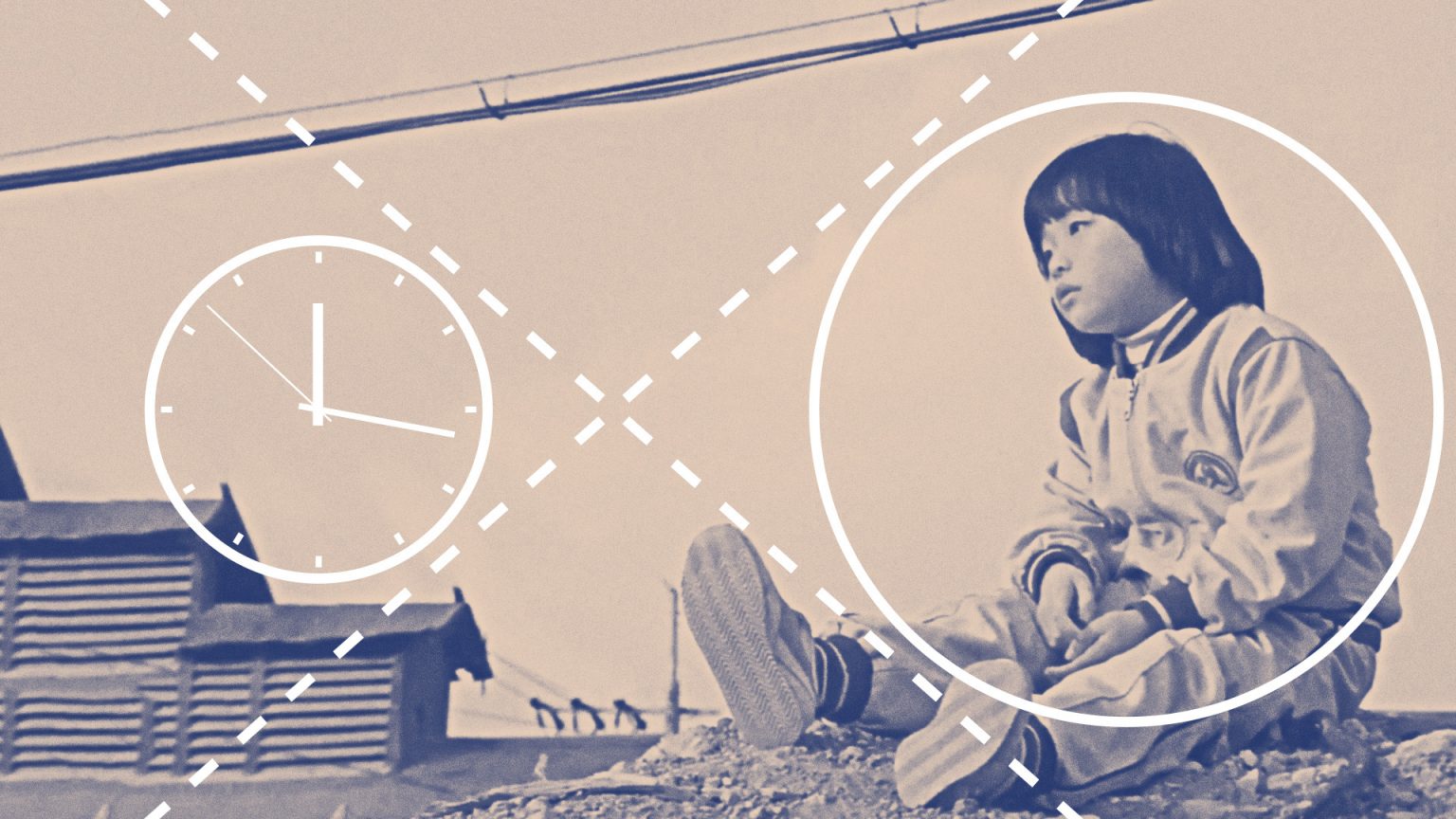When we are young our relationship to time is different. Time passes slower of course, but there is something more to it than that. That slowness lends childhood a weight, and as a result, the smallest actions mean more. The very best filmmakers have the ability to manipulate how the audience experiences time, allowing the viewer a window back into that world of childhood. “Child time,” as I will call it throughout this article, refers to this warped period of adolescence, where things take longer, the present seems denser, and our ability to let go, or latch on, is sporadically dependent on the little things. Movies like So Yong Kim’s Treeless Mountain compelled us to confront “child time” alongside their adolescent characters.
The absence of a loved one, no matter how brief, can feel like a huge amount of time, which, when you’re a child, already seems slow. This is precisely what So Yong Kim does in Treeless Mountain. In the film, Jin (Hee Yeon Kim), and her little sister, Bin (Song-Hee Kim), find themselves abandoned, while their mother (Soo Ah-Lee) searches for their father. In the meantime, the kids stay with their “Big Aunt” (Mi Hyang Kim) who begins to show growing disdain and neglect for the children as they await their mother’s return. What is so subtly brilliant about Treeless Mountain is that it never reveals to the viewer how long the two girls are with their Aunt. It could be a week, it could be months. Without the aid of dialogue or specific visuals, cutting between different days in a film can lead to temporal uncertainty. Kim takes advantage of this ambiguity inherent to film and uses it to absorb us into the strange and uncomfortable space of “child time.” This lack of clarity is exacerbated by the fact that the two sisters wear the same clothes each time we see them, the only change being that their outfits seem to become increasingly stained and dirtied as the film progresses. The costume design makes it seem to the viewer as if the sisters are stuck in some sort of strange limbo.
Once we are absorbed in the discomfort of “child time,” we find ourselves astonished by the prowess of the film’s young actresses. Hee Yeon Kim as Jin expresses a complex and consistent look of contemplative confusion in the absence of her mother, and a calculating determination to find a way to expedite her return and survive her Aunt’s neglect. Song-Hee Kim as Bin, on the other hand, follows her sister and seeks out opportunities to play in order to distract herself from the weight she must endure. Kim does an excellent job of limiting the audience to the experience of the girls; we feel the weight of time as they feel it. The camera frames the film’s two lead characters almost exclusively in close-ups and medium shots, providing us with the intimate sense that we too must wait.
Not all filmmakers, however, choose to interpret and express “child time” as So Yong Kim does. Different formal decisions and techniques allow the director to return us to it on their own terms. The endings of François Truffaut’s The 400 Blows, and Sean Baker’s The Florida Project provide us with almost diametrically opposite expressions of “child time.” At the end of The 400 Blows, Antoine (Jean-Pierre Léaud) runs away from his school. It’s a lengthy scene, but when he makes it to the beach the film suddenly ends on a freeze-frame as he turns around to look at the camera. For Antoine, he is caught in such an extreme state of uncertainty that time itself has frozen.
On the other hand, at the end of The Florida Project, the rate of time changes in the face of Moonee’s (Brooklynn Prince) desperation. Jancey (Valeria Cotto) grabs her hand, and they run through Disney World in a sped-up montage. The previously slow “child time” of the two girls has been quickened, as they fervently attempt to remove themselves from the adult world’s plans to destroy their friendship. The stark difference between these two endings exposes the thematic complexity and narrative possibility inherent in depicting “child time.” In Abbas Kiarostami’s Where is the Friends Home? for example, the child’s meandering search for his friend critiques the complacency of the adults around him in the face of a government that censors its own people. Or in the case of Yasujirô Ozu’s comedic Good Morning, the two brothers take an indefinite vow of silence to get their parents to buy them a TV. Yet, at the same time, their long silence functions as a subversive protest of the formality of the Japanese language and society.
When a director is able to remind us of the nuance and compassion involved in experiencing and understanding “child time,” our perspective is changed. The perspective of children can offer an incomparable clarity, however, in order to access this outlook, we must experience time as they do. There is no other medium that affords us the opportunity to enter the temporal space of childhood as well as film. So the next time you need a break from the busy and easily quantified time of adulthood, watch Treeless Mountain and remember what it’s like to dwell in the beautifully indeterminate “child time.”
Watch Now: Treeless Mountain by So Yong Kim.




